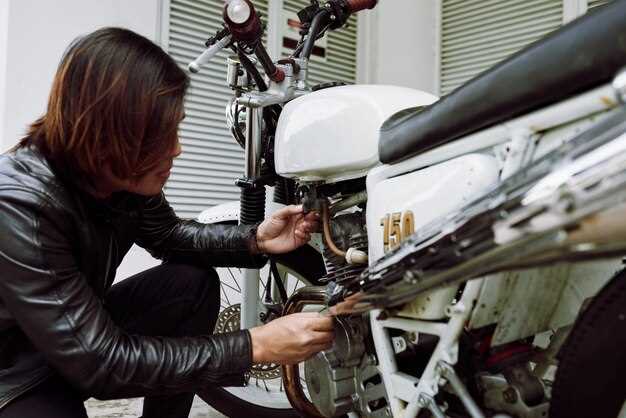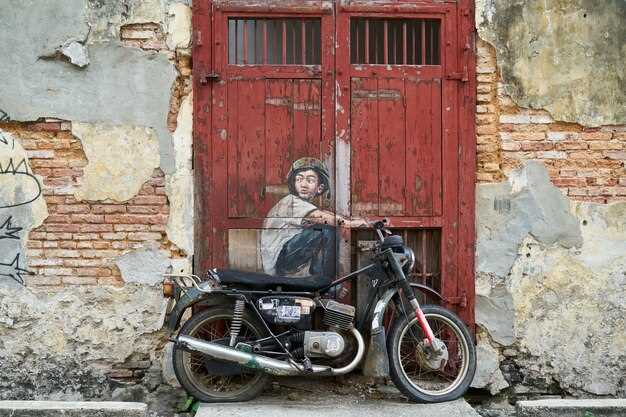Pros and cons of restoring a salvage motorcycle


Restoring a salvage motorcycle can be an exhilarating yet challenging endeavor for enthusiasts and hobbyists alike. The thrill of breathing new life into a damaged bike offers a unique satisfaction that many riders find irresistible. However, this process comes with its own set of benefits and drawbacks, requiring careful consideration before embarking on such a project.
On one hand, the benefits of motorcycle restoration are profound. Not only can it be a cost-effective solution to owning a motorcycle, but it also allows for customization and the opportunity to learn valuable technical skills. Enthusiasts often find joy in the meticulous work of restoring a bike to its former glory, turning a once-neglected machine into a source of pride. Additionally, salvaged motorcycles can hold significant value if restored properly, making it a potentially lucrative venture.
Conversely, the drawbacks of salvage motorcycle restoration should not be overlooked. This process can be time-consuming and may require substantial financial investment–much more than initially anticipated. Hidden damages and the need for specific parts can complicate the restoration process, leading to frustration for both novice and seasoned mechanics. Furthermore, the emotional and psychological commitment involved in such projects can be significant, demanding both patience and resilience.
In summary, while the restoration of salvage motorcycles can provide immense gratification and a pathway to unique ownership, it also poses a series of challenges that must be thoughtfully navigated. Understanding both the perks and pitfalls of this undertaking is essential for anyone considering diving into the world of motorcycle restoration.
Cost Analysis of Salvage Motorcycle Restoration Projects

Restoring a salvage motorcycle can be an exciting endeavor, but it’s crucial to conduct a thorough cost analysis before diving in. Initial purchase price is often a major factor; salvage motorcycles are usually available at significantly lower prices than their roadworthy counterparts. However, it’s essential to assess the extent of damage and the parts needed for restoration, as these can vary dramatically in cost.
Parts and materials required for repairs can range from affordable to expensive, depending on the motorcycle’s make and model. Common components such as tires, headlights, and body panels contribute to overall expenses. Additionally, sourcing genuine parts can be costly, while aftermarket components may offer savings but impact quality and performance.
Labor costs also play a vital role in the overall budget. For those who possess mechanical skills, undertaking repairs personally can yield substantial savings. However, hiring professionals for complex tasks like engine overhauls or electrical system repairs may inflate project costs significantly.
Moreover, it’s important to factor in hidden costs, such as tools needed for restoration or potential unforeseen repairs that could arise once the motorcycle is disassembled. Proper planning and budgeting can help in managing these expenses effectively, ensuring the project remains financially viable.
In summary, the overall cost of a salvage motorcycle restoration project can vary widely based on the motorcycle’s condition, the availability and price of parts, labor inputs, and hidden expenses. A diligent analysis of these factors can lead to a worthwhile investment that yields both financial and personal rewards.
Technical Skills Required for Successful Motorcycle Restoration
Successful motorcycle restoration, particularly when dealing with salvage bikes, requires a diverse set of technical skills. These competencies allow the restorer to effectively evaluate, repair, and bring a motorcycle back to life.
First, mechanical skills are essential. A deep understanding of motorcycle engines, transmissions, and other critical components enables restorers to identify issues and perform necessary repairs. Knowledge of how to disassemble, reassemble, and adjust mechanical systems is paramount for ensuring the motorcycle operates smoothly after restoration.
Next, electrical skills play a significant role. Modern motorcycles often feature intricate electrical systems that include wiring, sensors, and electronics. A restoration expert must be capable of diagnosing electrical problems and making repairs or replacements as needed. This includes understanding schematics and safely working with various electrical components.
Furthermore, knowledge of welding and fabrication techniques is invaluable when restoring salvage motorcycles. Often, a motorcycle may have parts that are too damaged to repair, requiring custom fabrication. Being able to create or modify components ensures that the restoration is both functional and aesthetically pleasing.
Lastly, finishing skills, such as painting and polishing, are essential to achieving a visually appealing restoration. Surface preparation, painting techniques, and finishing touches can significantly impact the overall look of the motorcycle. A restorer must be proficient in these areas to ensure that the restored bike is not only operational but also visually striking.
In summary, a successful motorcycle restoration demands a combination of mechanical, electrical, welding, and finishing skills. Mastery of these technical areas enables individuals to effectively salvage and restore motorcycles to their former glory.
Legal Considerations and Insurance Implications for Restored Bikes

When considering the restoration of a salvage motorcycle, it is essential to understand both legal and insurance factors that may arise during the process. The status of a salvage bike can affect its title, registration, and insurability.
Title Status: A motorcycle classified as salvage typically has a title denoting it as such due to previous severe damage. Upon restoration, owners must apply for a rebuild, reconstructed, or restored title, depending on the state regulations. This process often requires inspections by local motor vehicle authorities to ensure that the bike meets safety and regulatory standards.
Registration: Once a salvage motorcycle is restored and has the appropriate title, it can be re-registered for legal use. However, states may impose specific requirements, such as documentation of repairs and proof of safety inspections. Understanding these regulations is crucial to avoid potential legal issues while riding the restored motorcycle.
Insurance Coverage: Insuring a restored motorcycle can be more complex compared to standard motorcycles. Many insurance companies require detailed information about the restoration process, including parts used, labor costs, and any modifications made. Not all insurers cover salvage bikes, so it is vital to research and find companies specializing in this area. Furthermore, the coverage options may differ, with some insurers offering limited liability and collision coverage due to the bike’s salvage history.
Resale Value: Keep in mind that restored motorcycles often have reduced resale value compared to non-salvage counterparts. Future buyers may worry about potential hidden damages or the quality of repairs, influencing their decision to purchase. Disclosure of the bike’s salvage status is typically required, impacting marketability.
In summary, legal considerations and insurance implications for restored motorcycles are multifaceted. Restoration can be rewarding, but understanding the relevant laws and insurance requirements is crucial to ensure compliance, safety, and value retention.